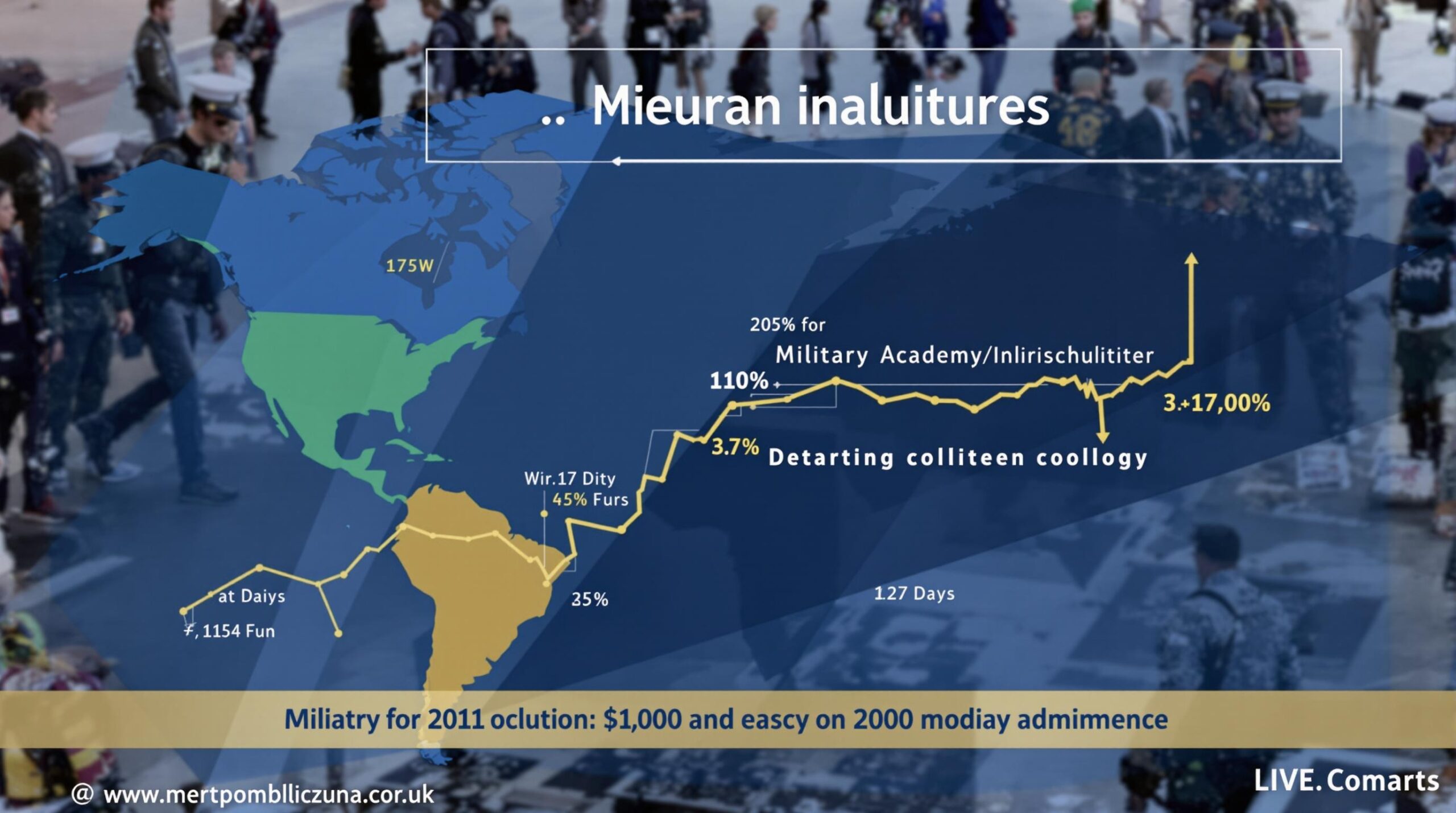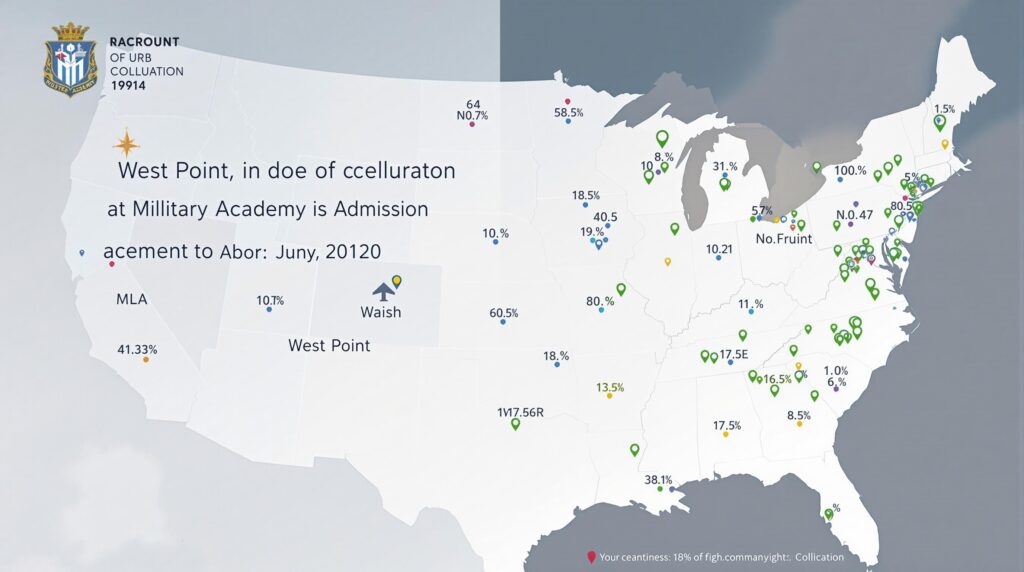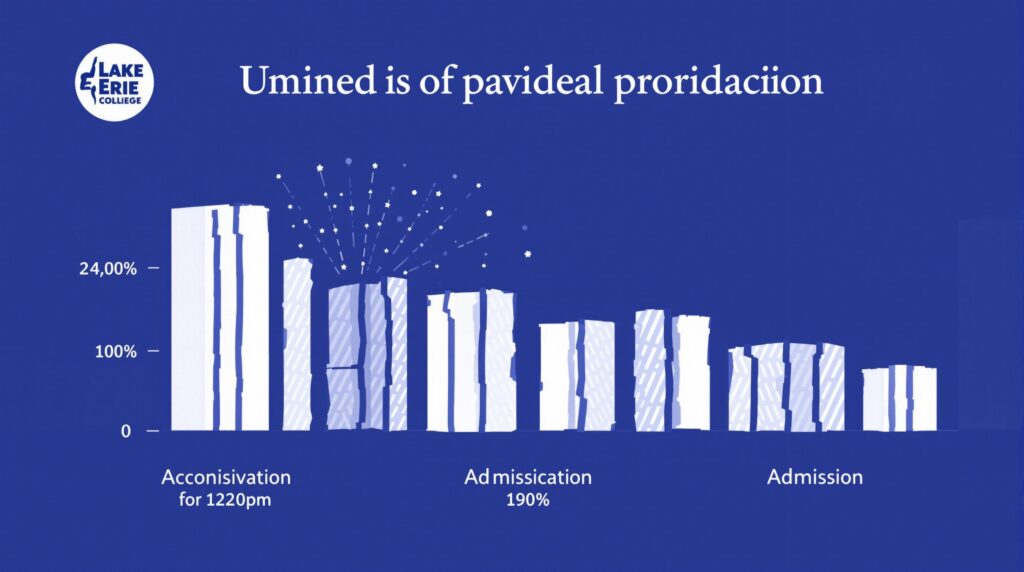West Point Academy’s acceptance rate appears highly selective at first glance, ranging between 9-14% in recent years, making it competitive with some of the most prestigious universities in America. The reality behind these statistics reveals a more nuanced picture: while thousands apply annually, only a fraction complete all eligibility requirements, and more than half of fully qualified candidates typically receive admission offers.
Key Takeaways
- West Point’s official acceptance rate for the Class of 2027 was 11%, with 1,255 students admitted from 11,430 applicants
- The adjusted acceptance rate for fully qualified candidates is much higher at 54%, as many applicants don’t complete all requirements
- Successful applicants typically score 1220-1450 on the SAT and rank in the top 20% of their high school class
- A congressional nomination is mandatory for all West Point applicants
- Admission requires passing strict physical fitness and medical exams that disqualify many potential candidates
Understanding West Point’s True Selectivity
When comparing colleges, West Point’s 9-14% acceptance rate might lead you to believe it’s as selective as elite honors programs or Ivy League schools. However, this figure doesn’t tell the complete story. Only 20-30% of applicants actually meet all baseline eligibility requirements, which include securing a congressional nomination, passing medical exams, and demonstrating physical fitness.
Looking at recent admissions cycles reveals interesting patterns. The Class of 2027 saw an 11% acceptance rate (1,255 admitted from 11,430 applicants), while the Class of 2026 had a 10% rate (1,209 from 12,589), and the Class of 2025 recorded 9% (1,214 from 13,984). But what happens when we focus on qualified candidates? Historical data shows that 54-70% of fully qualified applicants receive offers of admission—a significantly higher success rate.

Academic Requirements for Admission
West Point seeks academically strong students who can handle its rigorous curriculum. Admitted students typically score between 1220-1450 on the SAT (610-740 Math, 610-710 Reading) or 27-33 on the ACT. While West Point doesn’t publish official GPA requirements, successful applicants generally maintain GPAs between 3.42 and 3.64 according to AcceptanceRate.com.
Class rank is another important factor, with most admitted students coming from the top 20% of their class. This academic profile puts West Point applicants in a similar category to those applying to top-tier public universities, though the unique additional requirements make direct comparisons difficult.
Beyond Academics: Critical Non-Academic Requirements
What truly sets West Point apart from civilian universities is its comprehensive set of non-academic requirements. These additional criteria explain why many academically qualified students don’t complete the application process:
- Congressional nomination from a U.S. Representative, Senator, or the Vice President
- Candidate Fitness Assessment evaluating strength, agility, and endurance
- Comprehensive medical examination with strict standards
- Demonstrated leadership experience and character
The congressional nomination process is particularly challenging. Each member of Congress can have only five constituents attending West Point at any time, creating a bottleneck in the application process. Medical standards are equally strict, with conditions like asthma or certain vision problems resulting in automatic disqualification according to USMAData.
West Point Student Demographics
West Point’s student body remains predominantly male, with men comprising 76-87% of enrolled cadets. For the Class of 2027, this translates to approximately 970 men and 240 women—a 4:1 male-to-female ratio. While this ratio has improved over decades, gender parity remains a distant goal.
In terms of racial and ethnic diversity, recent enrollment data shows:
- White: 62%
- Asian: 11%
- Hispanic: 11%
- Black/African American: 10%
- Other (including multiracial): 6%
These figures reflect incremental progress in diversity efforts, though the academy continues working toward greater representation across all demographic categories.
Historical Trends in West Point Admissions
Application volume has fluctuated over recent years, from a high of 15,901 for the Class of 2024 to 11,430 for the Class of 2027. This decline correlates with the COVID-19 pandemic, which affected application patterns across higher education.
Despite these fluctuations, West Point’s institutional capacity has remained relatively constant at approximately 1,200-1,250 admits annually. This stability in class size means that acceptance rates tend to move inversely with application volume—when fewer students apply, the acceptance rate increases slightly.
Common Misconceptions About West Point Admission
Several misconceptions persist about West Point admissions. The most common is that the 9-14% acceptance rate reflects true selectivity. In reality, most rejections occur because applicants fail to complete all eligibility requirements—not because qualified candidates face extreme competition.
Another myth is that high test scores guarantee admission. While academics matter, West Point uses a holistic review process that weighs leadership potential, physical fitness, and character equally with academic achievements. In fact, only 31% of admitted students submitted ACT scores (versus 62% for SAT), showing flexibility in how academic potential is evaluated.
West Point vs. Other Elite Institutions
How does West Point compare to other selective institutions? Its 11% acceptance rate for the Class of 2027 stands against Stanford University’s 3.6%, MIT’s 4%, and the U.S. Naval Academy’s 8-10%. However, these direct comparisons are misleading due to West Point’s unique nomination requirements and service commitment.
A better comparison might be with specialized professional programs like law or medical schools, which also use multi-faceted admission criteria beyond academics. Even then, the military service academies stand apart in American higher education.
How to Improve Your West Point Application Chances
If you’re considering applying to West Point, focus on these key strategies:
- Start early—begin the nomination process during your junior year
- Maintain strong academics in challenging courses
- Develop physical fitness well beyond minimum standards
- Seek leadership roles in school and community organizations
- Research and understand the military commitment
Remember that West Point seeks candidates with leadership potential and character, not just academic achievers. Demonstrating your commitment to service and ability to thrive in structured environments will strengthen your application significantly.
Sources
Niche.com – United States Military Academy at West Point Admissions
gainserviceacademyadmission.com – West Point Acceptance Rate
collegetransitions.com – How to Get Into West Point
edurank.org – United States Military Academy
acceptancerate.com – United States Military Academy
usmadata.com – West Point is Not Selective
parchment.com – United States Military Academy



